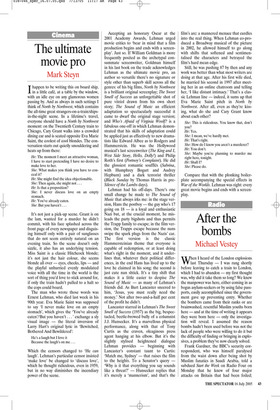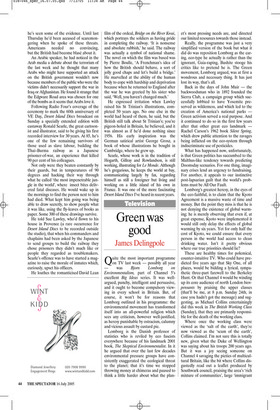Radio
After the bombs
Michael Vestey
When I heard of the London explosions last Thursday — I was rung shortly before leaving to catch a train to London, which I had to abandon — my first thought was, why did it take them so long? We knew the manpower was here, either coming in as bogus asylum-seekers or by using false passports, easily accomplished since the government gave up preventing entry. Whether the bombers came from their ranks or are brainwashed, resentful Muslim youths born here — and at the time of writing it appears they were born here — only the investigation will reveal. I assumed the reason bombs hadn’t been used before was not the lack of people who were willing to do it but the difficulty of finding or bringing in explosives, a problem they’ve now clearly solved.
Frank Gardner, the BBC’s security correspondent, who was himself paralysed from the waist down after being shot by Muslim fanatics in Saudi Arabia, told a subdued Start the Week on Radio Four on Monday that he knew of four major attacks on Britain that had been foiled; he’s seen some of the evidence. Until last Thursday he’d been accused of scaremongering when he spoke of these threats. Americans needed no convincing, but the British had become blasé about it.
An Arabic speaker, he had noticed in the Arab media a debate about the terrorism of the last week and he thought that many Arabs who might have supported an attack on the British government wouldn’t now because members of the public who were the victims didn’t necessarily support the war in Iraq or Afghanistan. He found it strange that the Edgware Road area was chosen for one of the bombs as it seems that Arabs love it.
Following Radio Four’s coverage of the ceremony to mark the 60th anniversary of VE Day, Desert Island Discs broadcast on Sunday a specially extended edition with castaway Ronald Searle, the great cartoonist and illustrator, said to be giving his first recorded interview for 30 years. At 85, he’s one of the few remaining survivors of those used as slave labour, building the Thai–Burma railway as a Japanese prisoner-of-war, an experience that killed 90 per cent of his colleagues.
Not only were they beaten constantly by their guards, but in temperatures of 90 degrees and hacking their way through what he called ‘the most impenetrable jungle in the world’, where insect bites delivered fatal diseases. He would wake up in the mornings to find the person next to him had died. What kept him going was being able to draw secretly, to show people what it was like, using the fly-leaves of books as paper. Some 300 of these drawings survive.
He told Sue Lawley, who’d flown to his house in Provence (a rare occurrence for Desert Island Discs to be recorded outside the studio), that when his commanders and chaplains had been asked by the Japanese to send groups to build the railway they chose prisoners they didn’t much like or people they regarded as troublemakers. Searle’s offence was to have started a magazine to raise the morale of inmates which, curiously, upset his officers.
He loathes the romanticised David Lean film of the ordeal, Bridge on the River Kwai, which portrays the soldiers as having pride in completing the railway. ‘It is nonsense and absolute rubbish,’ he said. The railway was actually a symbol of national shame. The novel on which the film was based was by Pierre Boulle, ‘A Frenchman’s idea of how the British should behave, a sort of jolly good chaps and let’s build a bridge.’ He marvelled at the ability of the human body to cope with hardship and deprivation because when he returned to England after the war he was greeted by his sister who said, ‘Well, you haven’t changed much.’ He expressed irritation when Lawley raised his St Trinian’s illustrations, completed 50 years ago. No one else in the world had heard of them, he said, but the British still talk about St Trinian’s; you’re pigeon-holed in Britain, he believed, and it was almost as if he’d done nothing since 1956. His early inspiration was the German satirical artist George Grosz, a book of whose illustrations he bought in Cambridge, where he grew up.
Searle, whose work is in the tradition of Hogarth, Gillray and Rowlandson, is still working, illustrating for Le Monde. Although he’s gregarious, he keeps the world at bay, communicating largely by fax, regarding himself as still a foreigner but living and working on a little island of his own in France. It was one of the more fascinating Desert Island Discs I’ve heard in recent years.



























































 Previous page
Previous page